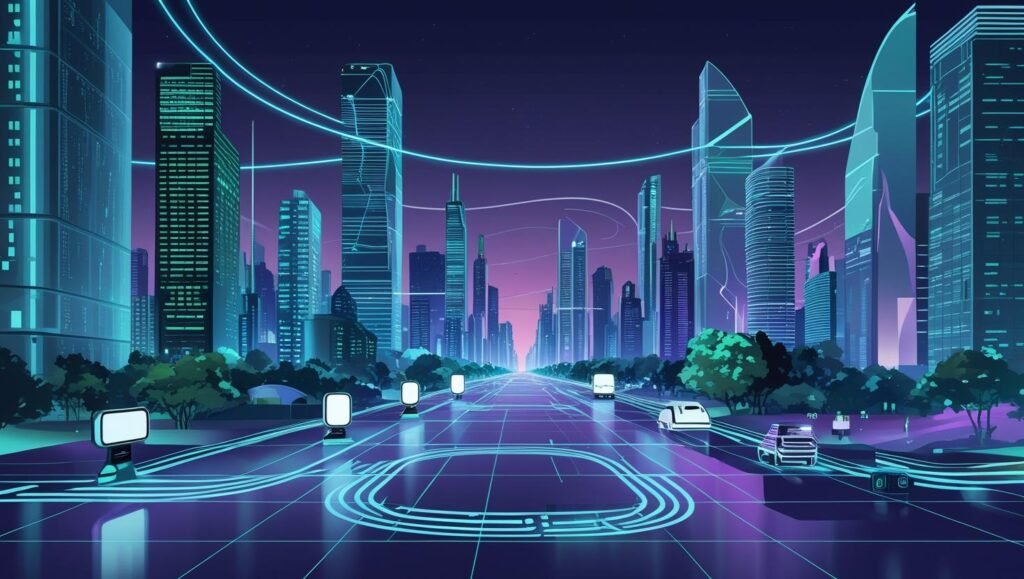Power consumption: How NB-IoT cuts energy in smart devices

Introduction
Ever wondered why your smart devices run out of battery so fast? Power consumption is a big challenge for the Internet of Things (IoT). Smart devices, like sensors or smart meters, need to work for years without a recharge. That’s where NB-IoT, or Narrowband IoT, comes in. It’s a technology that helps devices use less energy while staying connected. In this blog, we’ll explore how NB-IoT slashes power consumption in smart devices, making them more efficient and eco-friendly. Let’s dive in and see how it works!
What Is NB-IoT and Why Does It Matter?
NB-IoT is a special type of network designed for IoT devices. It’s built to let devices send small amounts of data over long distances without using much power. Unlike your phone, which needs constant charging, NB-IoT devices can last up to 10 years on a single battery! This is a game-changer for things like smart water meters or environmental sensors. By cutting power consumption, NB-IoT helps save money and reduces waste from replacing batteries.
Why Power Consumption Is a Problem
Smart devices are everywhere—think smart thermostats, fitness trackers, or even farm sensors. But many of these devices run on tiny batteries. If they use too much power, they die quickly. This means more maintenance, higher costs, and harm to the environment. NB-IoT solves this by using clever tricks to keep power consumption low while still keeping devices connected.
How NB-IoT Reduces Power Consumption
NB-IoT is like a superhero for energy efficiency. It uses a few smart techniques to make sure devices don’t waste power. Here’s how it works:
- Low Data Rates: NB-IoT sends small bits of data, like temperature readings, instead of big files. This uses less energy than Wi-Fi or Bluetooth.
- Sleep Mode: Devices “sleep” when they’re not sending data. This cuts power consumption by turning off most functions until needed.
- Strong Signal: NB-IoT works well even in tough spots, like basements. It uses less power to connect because it’s designed for weak signals.
- Simple Design: NB-IoT skips fancy features that drain batteries, focusing only on what’s needed for IoT tasks.
These features make NB-IoT perfect for devices that need to stay on for years without a battery swap.
Real-World Examples of NB-IoT in Action
Let’s look at some examples of NB-IoT saving energy. In smart cities, NB-IoT powers parking sensors that tell drivers where empty spots are. These sensors send tiny updates and sleep most of the time, keeping power consumption low. In farming, NB-IoT soil sensors check moisture levels and send data only a few times a day. This lets them run for years on one battery. These examples show how NB-IoT makes smart devices more practical and sustainable.

Comparing NB-IoT to Other Protocols
How does NB-IoT stack up against other IoT protocols? Here’s a quick look:
| Protocol | Power Consumption | Range | Best Use Case |
|---|---|---|---|
| NB-IoT | Very Low | Up to 10 km | Smart meters, sensors |
| LoRaWAN | Low | Up to 15 km | Rural IoT applications |
| Zigbee | Moderate | Up to 100 m | Home automation |
| Bluetooth LE | Moderate | Up to 100 m | Wearables, short-range |
NB-IoT shines for long-range, low-power needs. It’s not perfect for everything, but it’s great for devices that need to sip power and work far away.
Benefits of Low Power Consumption
Using NB-IoT doesn’t just save energy—it brings big benefits:
- Longer Device Life: Batteries last years, so devices need less maintenance.
- Lower Costs: Fewer battery replacements mean savings for businesses and users.
- Eco-Friendly: Less battery waste helps the planet.
- Scalability: NB-IoT supports thousands of devices in one network, perfect for smart cities.
By focusing on power consumption, NB-IoT makes IoT systems more practical and sustainable for the future.
What’s Next for NB-IoT?
The future of NB-IoT is exciting. With 5G networks growing, NB-IoT is getting even better at handling more devices with less power. Researchers are also working on energy harvesting, where devices could use solar or kinetic energy to power themselves. But there’s more to learn about how NB-IoT can push power consumption even lower. Want to dive deeper into the technical details and latest advancements? Check out our full research paper for a complete look at NB-IoT’s energy-saving tricks and
[Read the Full Research Paper]




